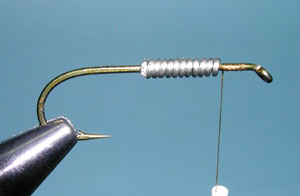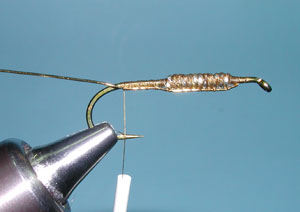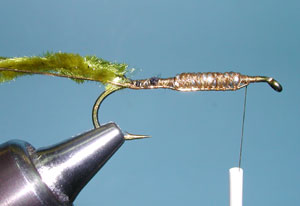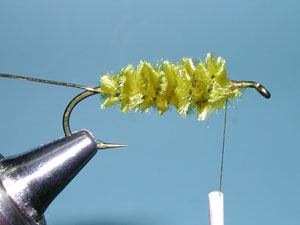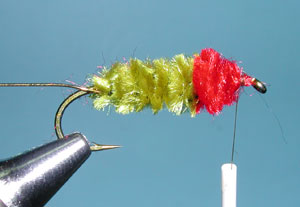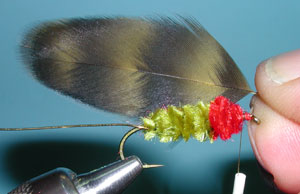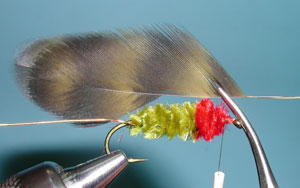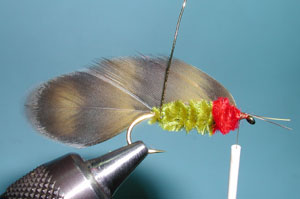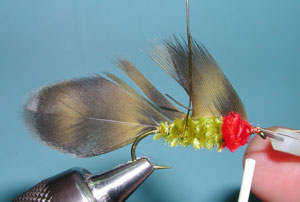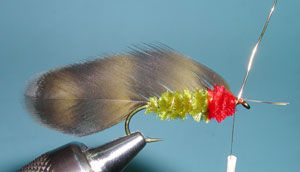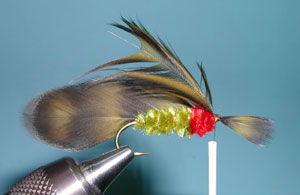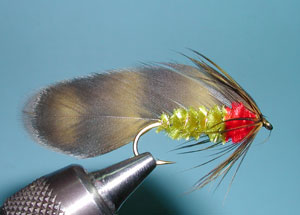Matuka
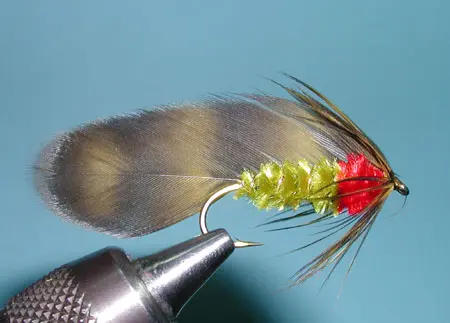
Red Throat Olive Matuka
Tying Instructions
| Materials
to Order Material, click the link |
|
|---|---|
| Hook | TMC 5263 #6-14 |
| Thread | Danville Olive 6/0 |
| Weighted | 20 wraps 0.020 leadfree wire |
| Thorax | Red Chenille |
| Body | Olive Chenille |
| Ribbing | Gold Tinsel |
| Wing | Four Grizzly Olive Hen Hackles |
| Collar Hackle | Grizzly Olive Hen Hackle |
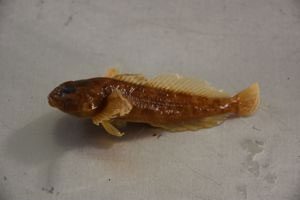
Matuka
The Matuka patterns originated in New Zealand where they were known from their Maori name, Matuku, and were introduced to our Sierran streams during the 1980’s. The Matuka was first revealed to North American fly fishers through Fly Fishing Strategy by Swisher and Richards, published in 1975. It is a featherwing streamer but the hackle is attached to the shank of the hook by wire ribbing and the barbs are removed to the quill where the hackle lays on top of the body.
Matuka Style

Matuku Bird
The original Matuku bird is protected and the feather was replaced with Hen Pheasant Flank feathers and, later, Chicken Hen Hackles. The pattern became quite popular in Australia, United States, and Britain so that the name became transliterated to Matuka. And, since it was no longer from a Matuku bird, the pattern was considered a style of fly rather than a particular fly pattern.
Matuka Comeback
During the 1990’s, the Red Throat Olive Matuka was one of the favorite streamers within Lake Crowley. These flies can be tied in many colors such as Olive, Black, Red, and Purple. There is a trend within the Sierra to tie these patterns onto smaller hooks, such as sizes 12-14. The smaller streamers can more effectively mimic the actual fry that inhabit most of the lakes and streams. Recently streamers, such as Seal Buggers and Punk Perch, have found increased favor but, come back to this pattern. Many trout like to see something different and this could be a good pattern to reintroduce those trophy trout to. Use a sinking line and fast twitching action.
Variations
I’ve included a variation by Bear Andrews which is depicted in the FFF Fly Pattern Encyclopedia by Al and Gretchen Beatty. He used Crystal Chenille for the body and incorporated “church window” feathers from a Ringneck Pheasant skin for the cheeks. Using cheek materials on featherwing patterns is often a “trigger” effect for many gamefish as well as using a red throat material for the gills of a frightened baitfish.
Variations
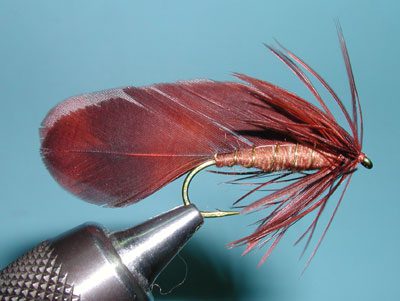
Brown Matuka
| Hook | TMC 5263 #6-14 |
| Thread | Danville Brown 6/0 |
| Weighted | 20 wraps 0.020 leadfree wire |
| Body | Uni-Yarn Brown |
| Ribbing | Copper Wire |
| Wing | Four Grizzly Brown Hen Hackles |
| Collar Hackle | Grizzly Brown Hen Hackle |

Black Matuka
| Hook | TMC 5263 #6-14 |
| Thread | Danville Black 6/0 |
| Weighted | 20 wraps 0.020 leadfree wire |
| Thorax | Red Chenille |
| Body | Midnight Fire Speckled Crystal Chenille |
| Ribbing | Small Silver Wire |
| Wing | Four Silver Badger Hackle |
| Collar Hackle | Black Henback Hackle |
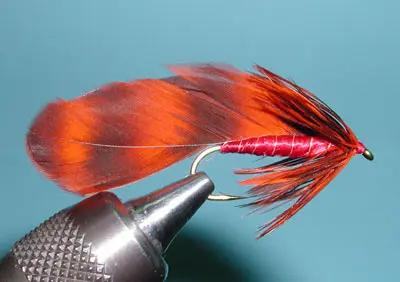
Red Matuka
| Hook | TMC 5263 #6-14 |
| Thread | Danville Olive 6/0 |
| Weighted | 20 wraps 0.020 leadfree wire |
| Thorax | Red Chenille |
| Body | Red Floss |
| Ribbing | Small Silver Wire |
| Wing | Four Orange CDL Hen Saddle Hackles |
| Collar Hackle | Orange CDL Hen Saddle Hackles |
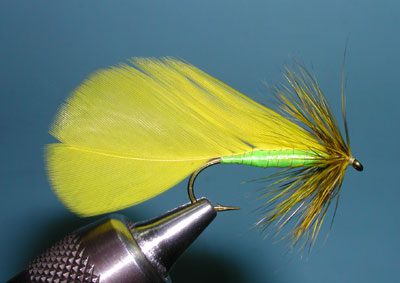
Yellow Matuka
| Hook | TMC 5263 #6-14 |
| Thread | Danville Yellow 6/0 |
| Weighted | 20 wraps 0.020 leadfree wire |
| Body | Yellow Floss |
| Ribbing | Small Silver Wire |
| Wing | Four Yellow Hen Saddle Hackles |
| Collar Hackle | Grizzly Olive Hen Saddle Hackle |
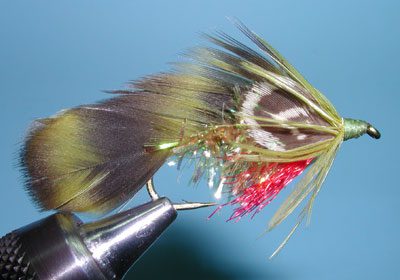
Bear’s Olive Matuka
| Hook | TMC 5263 #6-8 |
| Thread | Danville Olive 6/0 |
| Weighted | 20 wraps 0.020 leadfree wire |
| Cheeks | Quick View |
| Body | Olive Krystal Chenille |
| Ribbing | Brassie Olive Ultrawire |
| Wing | Four Grizzly Olive Hen Hackles |
| Collar Hackle | Olive Henback Hackle |
| Throat | Red Super Hair |

